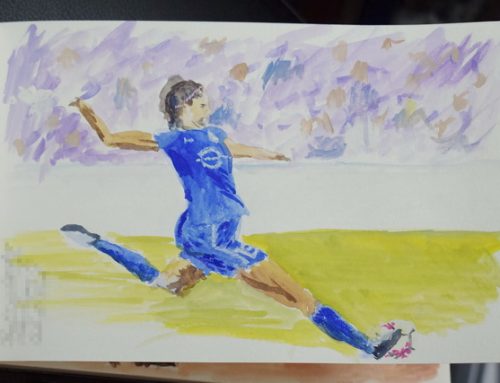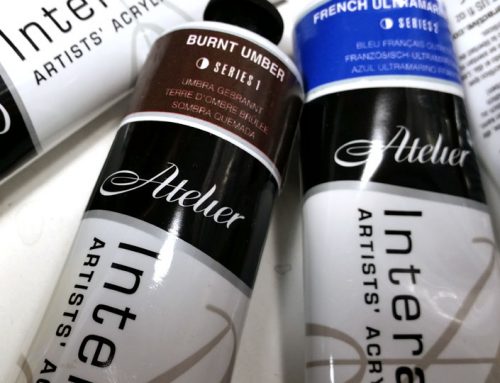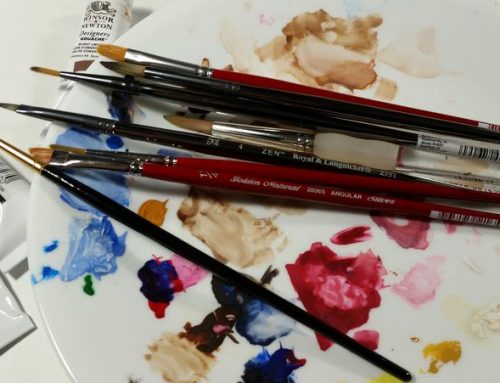As we are now in the third millennium of the Common Era, a 2-d artist often faces an interesting problem: should ey* work in natural, “traditional” media, or work in the digital realm? It’s not a small thing if your intent is to try earning a living in the visual arts.
Many, like me, will work in either. Even so, I’ve chosen to focus more on natural media rather than digital. There isn’t any one reason, but the persistence and uniqueness of an actual physical piece of one-of-a-kind art did appeal to me on several levels. Also, in some ways, it takes more courage. Your methods of undo are limited when working in natural media.
Digital, though, does have its appeal. It’s faster. Any given piece of art can generally be made quicker in the digital world. There are all those levels of undo which, when something just isn’t quite “there”, allows for the kind of trial-and-error that you don’t get with the more traditional methods. A big thing is that it is significantly less costly. Keep in mind that this is coming from an airbrush artist’s perspective. Good air compressors and airbrushes are far from cheap. Add in the cost of supports and you’re talking about a constant expense that you simply don’t find in the digital art world.
A minus of digital media is that the original doesn’t have the same meaning as it does in traditional media. The actual quality of the work may be the same, but the singular nature of a physical original has a value that doesn’t have a good parallel when an image is a compilation of 1s and 0s. On the other hand, a print made from a digital source will generally be better. There is no extra generation. The art can go straight to the giclee printer. Natural media has to be photographed or scanned to a digital file before a print can be made. That, too, carries with it an expense, but more importantly, you lose some of the fidelity of the original. Oh, you can get close. Very very close. But still, something does get lost in the conversion.
For me, when all is said and done, the tipping point is feel. A digital tablet doesn’t give the same somatic pleasure as holding a brush, or a knife, or a stick of graphite. It distances the artist just a little bit. That’s neither good or bad if the resulting image is the same, but I find part of the pleasure of art is being able to feel it as it’s being created.
 Regardless of my enjoyment of natural media, I’m not a stranger to using computers. You can see some examples in my gallery. The image to the right (from deep in my archives), of a gymnast, started out on a CP/M computer back in the 80s. As computers got increasingly powerful and graphics programs more capable, it gradually evolved.
Regardless of my enjoyment of natural media, I’m not a stranger to using computers. You can see some examples in my gallery. The image to the right (from deep in my archives), of a gymnast, started out on a CP/M computer back in the 80s. As computers got increasingly powerful and graphics programs more capable, it gradually evolved.
 As digital art became a acceptable option in the 90s, if not for fine art, then for commercial art, I did some exploration as to what it could achieve. Perhaps the first piece where the result caused me to think that the time had come was this one I did of a character played by Lucy Lawless. There was still a way to go, but the foundation was set. The problem at the time was finding an affordable way to make prints as no place “serious” was accepting digital art.
As digital art became a acceptable option in the 90s, if not for fine art, then for commercial art, I did some exploration as to what it could achieve. Perhaps the first piece where the result caused me to think that the time had come was this one I did of a character played by Lucy Lawless. There was still a way to go, but the foundation was set. The problem at the time was finding an affordable way to make prints as no place “serious” was accepting digital art.
We’ve reached a point where either path can be a valid choice. On balance, neither form is particularly heads and shoulders above the other. Perhaps I’m showing my age by even suggesting that there is a choice at all. It’s the artist who produces the image, not the tool. Still, part of the fun of art is in the selection of the tools we use. It’s not just the message, it’s also the medium.





